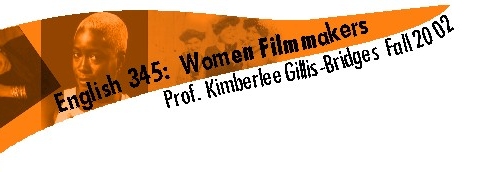


| Course M, 2:30-5:20 W, 2:30-4:20 Thomson 125 |
| Instructor K. Gillis-Bridges Padelford A305 543-4892 MW, 1:00-2:20 |
| Page last updated 11/14/02 |

Grading Criteria for Essays
A 80- to 100-point Essay (A Range)
- Has a substantive thesis and fully analyzes how the two films explore a well-defined theme; the thesis focuses on the significance of the films’ connections and presents a comparison that is defendable, clearly explained, and supported by the analysis
- Shows substantial depth, fullness and complexity of thought
- Expresses ideas clearly and commands the reader’s attention
- Demonstrates clear, unified and coherent organization
- Is fully developed and detailed with arguments supported by persuasive reasoning and references to films under study; there is an appropriate balance between providing evidence and analyzing that evidence
- Has a sophisticated style (remarkable variety of sentence pattern, smooth transitions between ideas, superior control of diction)
- If sources are used, essay properly cites source material
- Has few, if any, minor errors in grammar, usage or mechanics
- Has a clear thesis and essay analyzes how the two films explore a theme, but thesis and essay may not fully address the significance of the films’ connections; the thesis may be clear and well-argued, but could use additional support throughout the essay; or the thesis may be identifiable, but not sharply focused
- Shows some depth and complexity of thought
- Expresses ideas clearly
- Demonstrates effective organization
- Is well developed with sensible reasoning and appropriate references to films; however, some evidence may detract from the thesis and some ideas might not be fully explored.
- Demonstrates balance between evidence and analysis for the most part, but balance may be weak in places
- Has an effective style (some variety of sentence patterns, transitions between ideas, accurate diction)
- If sources are used, essay properly cites source material, but may have errors in citation format
- Has few errors in grammar, usage or mechanics
- Has a thesis that may not be entirely clear and essay does not fully analyze how the two films explore a particular theme; essay may mention many points of comparison and analyze few
- Shows insufficient awareness of the complexity of issues addressed; may treat the films simplistically or repetitively
- Communicates ideas clearly for the most part, but may have some lapses in clarity
- Has a recognizable organizational pattern, but the relation among parts is not consistently clear enough to provide a coherent focus
- Is unevenly developed; writer may offer sufficient reasoning or references to films for some of the ideas but not for others
- Demonstrates some balance between evidence and analysis
- Has an adequate style (limited variation in sentence patterns, transitions between most ideas, diction accurate for the most part)
- If sources are used, essay cites the majority of source material; occasionally material may be clearly cited but not referenced in parentheses
- Has some errors in grammar, usage or mechanics, but demonstrates basic control of these areas
- Has an unclear thesis; essay identifies similarities and differences and meets basic length requirements, but does not compare the films' treatment of the theme in any meaningful fashion
- Lacks focus or demonstrates confused, stereotyped or simplistic thinking; writer may demonstrate no overall conception of the issues raised by the films
- May not communicate ideas clearly
- Is ineffectively organized, with no clear relationship between the parts of the essay
- May not provide adequate or appropriate reasoning or references to support generalizations, or may provide details without generalizations
- Demonstrates little relationship between evidence and the thesis
- Has stylistic weaknesses (no variety of sentence patterns, few transitions, imprecise diction)
- If sources are used, essay indicates use of source material, but does not have consistent parenthetical references
- Has occasional major errors in grammar, usage or mechanics or frequent minor errors that interfere in the reader's understanding of the essay
- Has no thesis or has an incomprehensible thesis
- May be deliberately off-topic and demonstrate no understanding of the issues addressed by the films
- Does not communicate ideas clearly
- Lacks coherent organization
- Shows no development of ideas; may simply summarize film
- Has an incoherent style (difficulties with sentence structure, pattern of diction errors)
- Presents another writer’s work as the author’s own
- Has pervasive pattern of errors in grammar, usage and mechanics that renders the essay unreadable